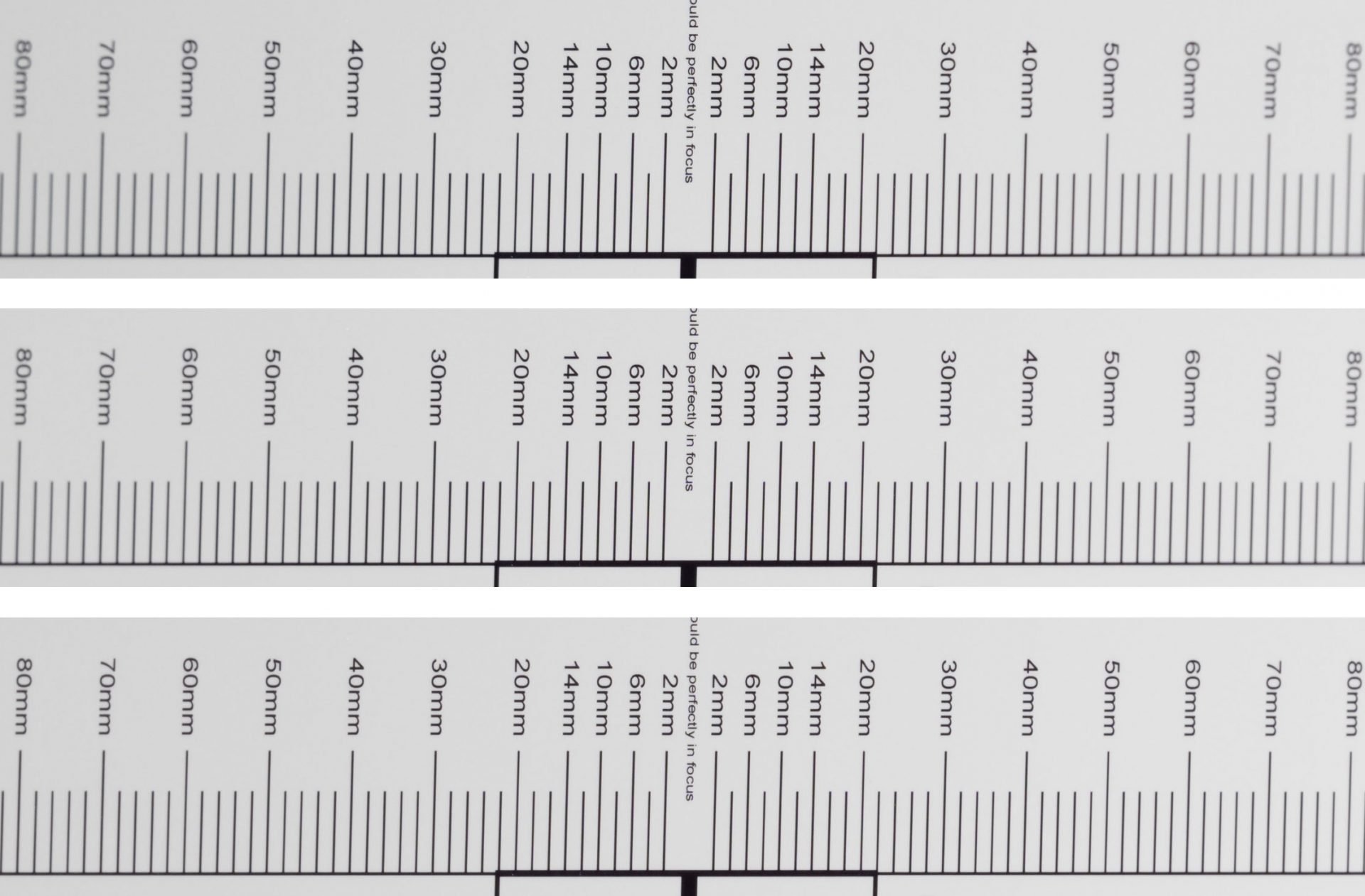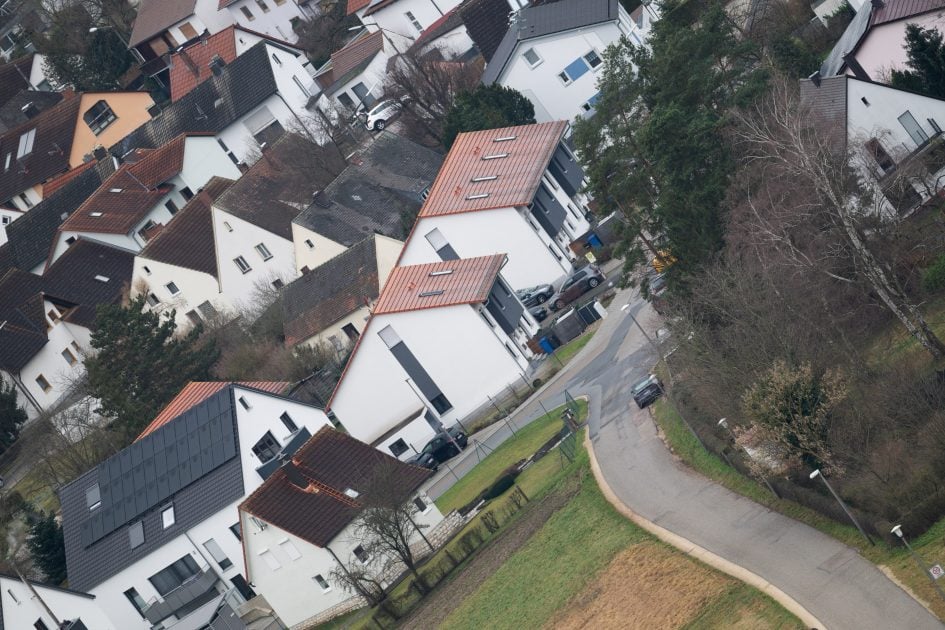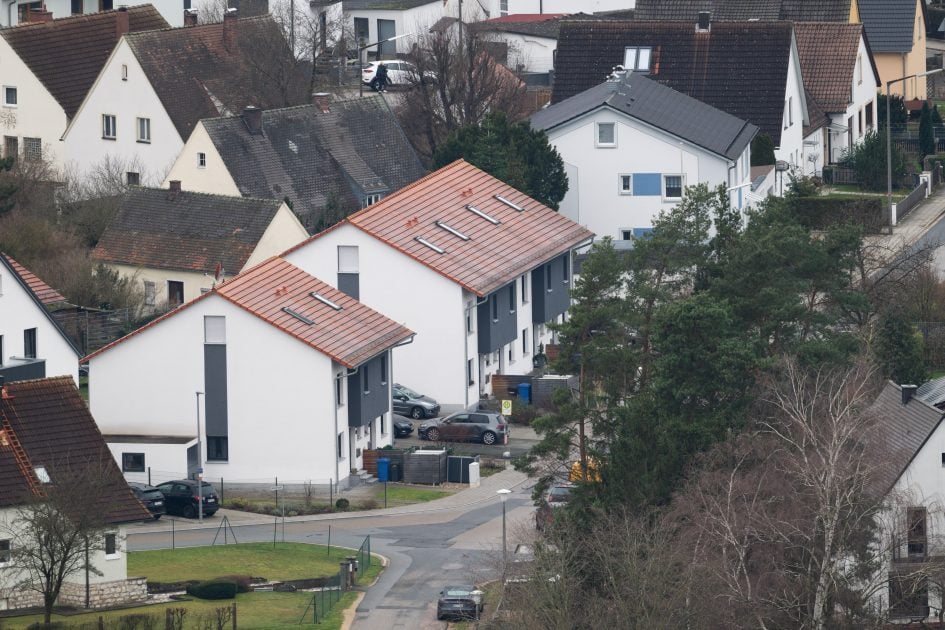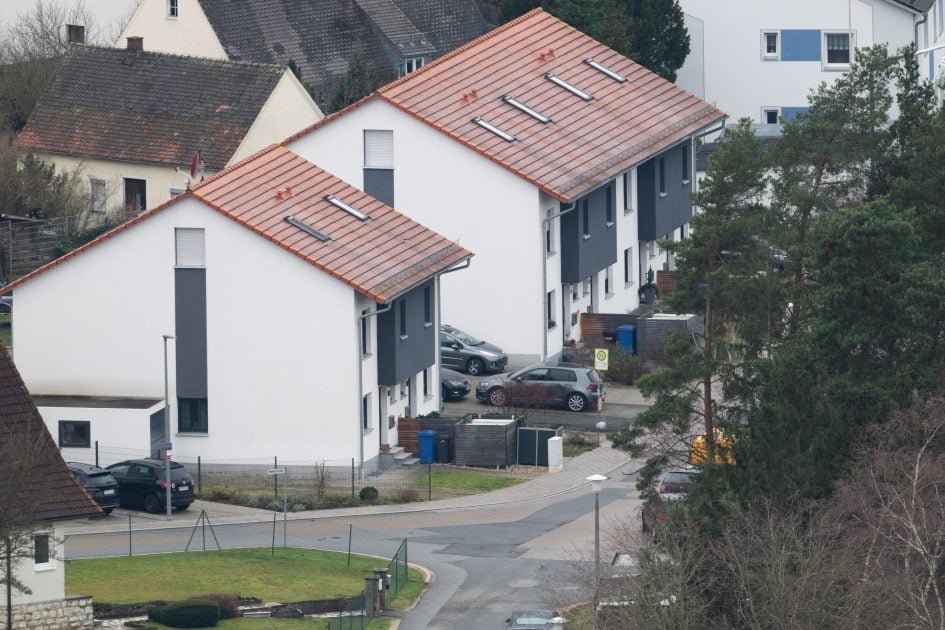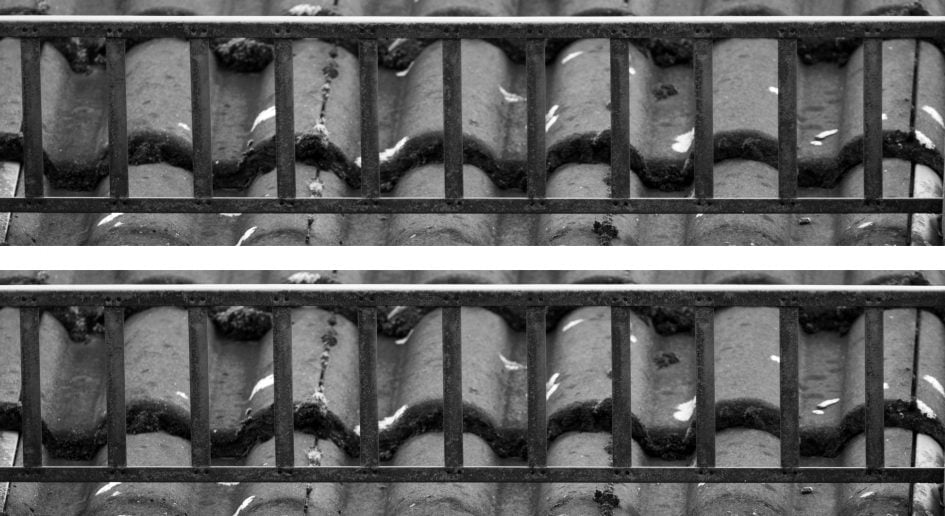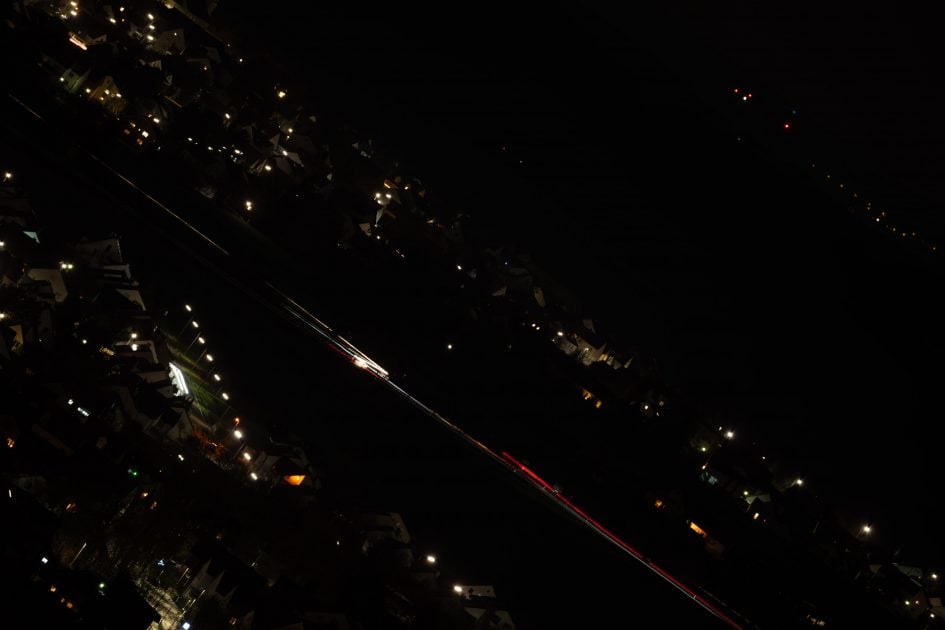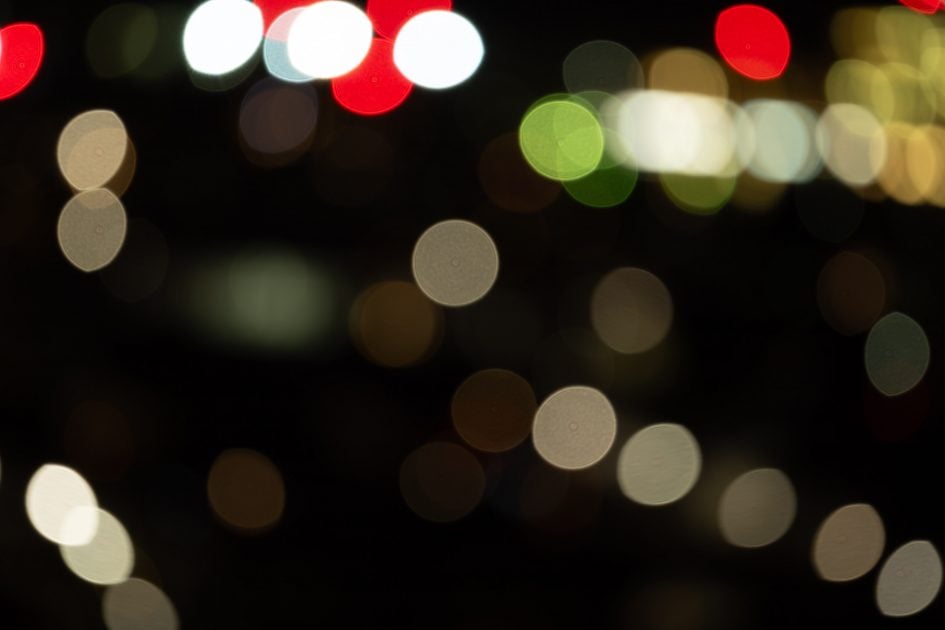Nikon Z 600mm f6.3 VR S review
-
-
Written by Thomas
Quality
Longitudinal Chromatic Aberration and focus shift
I tested the Nikon Z 600mm f6.3 VR S for longitudinal color aberrations (loCA, a.k.a. “axial color” or “bokeh CA”) and focus shift. The former can show up as magenta coloration in the foreground and greenish hues in the background and are not easily corrected in post-processing. The lens shows practically no loCA or focus shift:
Nikon Z 600mm f6.3 VR S longitudinal Chromatic Aberration (loCA)
Above from top to bottom: f6.3, f8.0, f11; 42% crops, left = foreground, right = background; click image for 100% crops
In all of my test-shots with the Nikon Z 600mm f6.3 VR S I could not detect any purple fringing around high-contrast edges in the focus plane and no green outlining around background subjects. Very good!
Sharpness and contrast
have a look at the theoretical performance of the Nikon Z 600mm f6.3 VR S and compare it to Nikon’s other tele-photo prime lenses and the Z 180-600mm f5.6-6.3 VR:
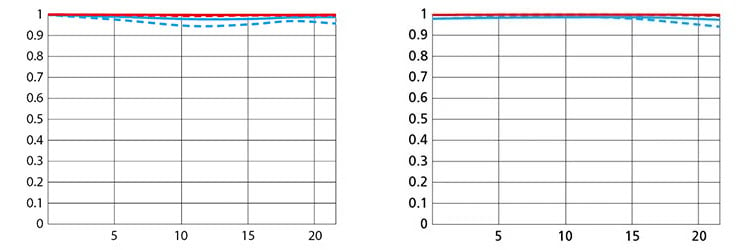
Above: Nikon Z 600mm f6.3 VR S at f6.3 (left), Z 600mm f4 TC VR S at 600m f4.0 (right)
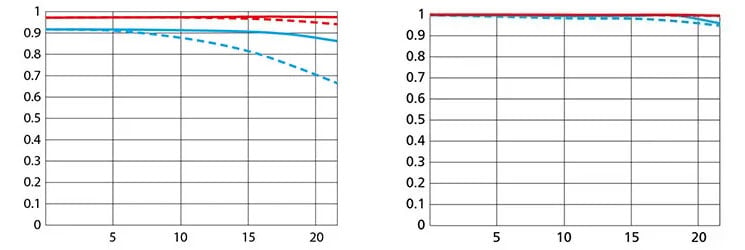
Above: Nikon Z 180-600mm f5.6-6.3 VR at 600mm f6.3 (left), Z 800mm f6.3 VR S at f6.3 (right)
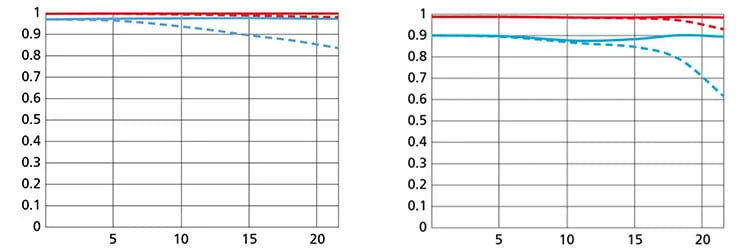
Above: Nikon Z 400mm f4.5 VR S at f4.5 (left), Z 400mm f2.8 TC VR S at 560mm f4.0 (right)
These MTF charts show the computed lens-performance of lenses wide open at infinity without influence of diffraction at 10 line-pairs/mm (red) and 30 lp/mm (blue). Higher values are better (more contrast) and the closer the dotted and solid lines are together the less contrast dependents on the orientation of the test-pattern (less astigmatism). The x-axis displays the distance from the optical axis (=center of the sensor) in mm. I’ll show you the real life performance at 4 mm (“center”), 13 mm (APS-C/DX-corner), and 20 mm (FF/FX-corner) on a 45MP Nikon Z8 body.
From the charts the Z 600mm f6.3 VR S shows very high overall contrast and resolution of fine details almost matching the Z 600mm f4 TC VR S (shown at f4.0) and Z 800mm f6.3 VR S. Central sharpness looks flawless, the DX-corner shows a very slight hint of astigmatism or field curvature, and the FX-corner is as good as it gets. Nikon’s Z 180-600mm f5.6-6.3 VR and the Z 400mm f2.8 TC VR S with its internal TC switched on (at 560mm f4.0) show some loss of acuity at 30 lp/mm although at 90% contrast they both still perform very good. The Z 400mm f4.5 VR S suffers from a bit of astigmatism at its native focal length. It still performs very good with the Z TC-1.4x at 560mm f6.3 but as there is no MTF-chart available for this combo it’s hard to draw the right conclusions.
Let’s see how this theoretical performance translates into real life results in the sharpness test based on Siemens-stars. Processing was done in Lightroom 13.1/CRAW 16.1 from RAW to Adobe Color profile with the built-in lens profile for CA, vignette control and distortion compensation applied. Noise-reduction is set to 0, sharpening to 50/0.5/36/10, with no extra tone, color, or saturation adjustment. White-balance was adjusted to a neutral white and I did some exposure compensation to make the brightness of all crops match. So you will not see light fall-off in the corners.
The following are all 100% crops!
First up is an overview of the wide-open performance at different focal lengths using the Nikon Z TC-1.4x and Z TC-2.0x. You can jump to the detailed results at different apertures and comparisons with other lenses by clicking on the crops of the respective focal length.
Nikon Z 600mm f6.3 VR S; 100% crop from center, DX-corner, FX-corner
Above: 600mm, f6.3
Above: 840mm, f9.0 (with Z TC-1.4x)
Above: 1200mm, f13 (with Z TC-2.0x)
Without teleconverter Nikon’s Z 600mm f6.3 VR S impresses with extremely even and high sharpness across the full-frame sensor even wide open. Using the lens with the Z TC-1.4x or Z TC-2.0x makes results visibly softer. This probably is in part due to diffraction effects from the focal ratio of f9.0 and f13.
Detailed results:
The following 100% crops show the Nikon Z 600mm f6.3 VR S from wide open down to f11/f16 compared to the Nikon Z 180-600mm f5.6-6.3 VR, Nikon Z 600 f4 TC VR S, and Nikon Z 800mm f6.3 VR S at 600mm, 840mm, and 1200mm. Or you skip the detail and fast-forward to the summary for this chapter.
Performance at 600mm:
Nikon Z 600mm f6.3 VR S compared; 100% crop from center, DX-corner, FX-corner

Above: Nikon Z 600mm f6.3 VR S at 600mm, f6.3

Above: Nikon Z 180-600mm f5.6-6.3 VR at 600mm, f6.3; also available at f8.0, f11

Above: Nikon Z 600mm f4 TC VR S at 600mm, f5.6; also available at f4.0, f8.0, f11

Above: Nikon Z 400mm f4.5 VR S + Z TC-1.4x at 560mm, f6.3; also available at f8.0, f11

Above: Nikon Z 600mm f6.3 VR S at 600mm, f8.0; also available at f11
The Z 600mm f6.3 VR S is a bit sharper than the 180-600mm zoom lens (or the Z 400mm f4.5 VR S + Z TC-1.4x) especially when looking towards the corners. But the Z 600mm f4 TC VR S is still the benchmark with visibly higher contrast and acuity. Stopping the Z 600mm f6.3 VR S down to f8 produces a small improvement, at f11 diffraction clearly softens the results.
Performance at 840mm:
Nikon Z 600mm f6.3 VR S + Z TC-1.4x compared; 100% crop from center, DX-corner, FX-corner

Above: Nikon Z 600mm f6.3 VR S + Z TC-1.4x at 840mm, f9.0

Above: Nikon Z 180-600mm f5.6-6.3 VR + Z TC-1.4x at 840mm, f9.0; also available at f11

Above: Nikon Z 600mm f4 TC VR S at 840mm, f8.0; also available at f5.6, f11

Above: Nikon Z 800mm f6.3 VR S at 800mm, f8.0; also available at f6.3, f11

Above: Nikon Z 600mm f6.3 VR S + Z TC-1.4x at 840mm, f11; also available at f16
To reach beyond 600mm focal length you can use the Z TC-1.4x on the Z 600mm f6.3 VR S and Z 180-600mm f5.6-6.3 VR which both soften visibly but still produce very usable results at 840mm, f9.0. Or you switch on the built-in TC on the Z 600mm f4 TC VR S or use the Z 800mm f6.3 VR S which both produce higher resolution at f8.0 (or wide open) than the Z 600mm f6.3 VR S + Z TC-1.4x. No lens in this comparison benefits from stopping down to f11 due to diffraction.
Performance at 1200mm:
Nikon Z 600mm f6.3 VR S + Z TC-2.0x at 1200mm compared; 100% crop from center, DX-corner, FX-corner

Above: Nikon Z 600mm f6.3 VR S + Z TC-2.0x at 1200mm, f13; also available at f16

Above: Nikon Z 180-600mm f5.6-6.3 VR + Z TC-2.0x at 1200mm, f13; also available at f16

Above: Nikon Z 600mm f4 TC VR S + Z TC-2.0x at 1200mm, f11; also available at f8.0

Above: Nikon Z 800mm f6.3 VR S + Z TC-1.4x at 1120mm, f9.0
Using the Z TC-1.4x on the Z 800mm f6.3 VR S and Z TC-2.0x on the other lenses yields softer results again than in the test at 800/840mm but with the same ranking: With some judicious extra sharpening the combination of Z 600mm f6.3 VR S and Z TC-2.0x can produce usable results closely follow by the Z 180-600mm. But better results at focal lengths around 1200mm can be achieved with the Z 600mm f4 TC VR S or Z 800mm f6.3 VR S.
Summary:
Nikon’s Z 600mm f6.3 VR S is sharper than the Z 180-600mm f5.6-6.3 VR but not as sharp as their Z 600mm f4 TC VR S. Differences in contrast and resolution are not that big at 600mm but become more pronounced when using teleconverters: At focal ratios of f9 or f13 diffraction clearly takes its toll while the Z 600mm f4 TC VR S is only at f5.6 or f8 when used with TCs to reach 840mm or 1200mm. Testing also revealed that the Z 600mm f6.3 VR S has practically no field curvature.
Performance at long distances
The Siemens-star test-targets are shot at a distance of 45x focal length (i.e., at around 27m for 600mm focal length). But performance of lenses also depends on the shooting distance. Therefore, I shot a city around 1 km away. Processing was done in Lightroom 13.1/CRAW 16.1 from RAW to Adobe Color profile with the lens profile compensating CA, vignetting, and distortions. Noise-reduction is set to 0, sharpening to 50/0.5/36/10, with no color or saturation adjustment. But I had to increase contrast by +33 to compensate for the reduced visibility at that time.
The following image shows the complete scene wide open plus 100% crops from approximately the center, DX-corner, and FX-corner. You can access the large original, but the file is for personal evaluation only and cannot be used in another publication or website without permission.
Nikon Z 600mm f6.3 VR S
Above: Nikon Z 600mm f6.3 VR S at 600mm, f6.3, 1/200, 250 ISO; click image for 4k version, here for large original; crops also available at f8.0, f11
Nikon Z 600mm f6.3 VR S + Z TC-1.4x at 840mm
Above: Nikon Z 600mm f6.3 VR S + Z TC-1.4x at 840mm, f9.0, 1/125, 400 ISO; click image for 4k version, here for large original; crops also available at f11, f16
Nikon Z 600mm f6.3 VR S + Z TC-2.0x at 1200mm
Above: Nikon Z 600mm f6.3 VR S + Z TC-2.0x at 1200mm, f13, 1/125, 500 ISO; click image for 4k version, here for large original; crops also available at f16
Summary:
In this long-distance test the Nikon Z 600mm f6.3 VR S repeated it’s very good performance from the preceding test with Siemens-stars. Even results with the Z TC-1.4x show fine details. It’s only with the Z TC-2.0x that the combination shows its limits – partly from the resolving power of the lens and partly due to diffraction at f13. It’s probably better to use the DX-crop on a shot made with the Z 600mm f6.3 VR S + Z TC-1.4x at 840mm, f9.
Vignetting and distortions
To make it easier to see light fall-off in the corners of a full-frame sensor I’ve arranged a series of three shots each with the Nikon Z 600mm f6.3 VR S. Processing was done in Lightroom 13.1/CRAW 16.1 from RAW to Adobe Color profile with the lens profile compensating CA, vignetting (as set in camera), and distortions and developed to the same brightness in the center. They are shown with vignette control Off (1st row) resp. Normal (2nd row).
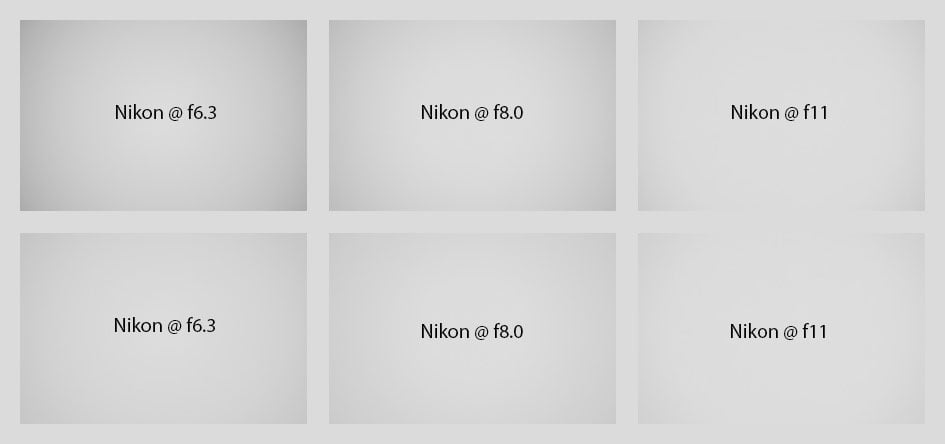
Above: Nikon Z 600mm f6.3 VR S
Wide open vignetting is very mild with the lens profile applied and practically irrelevant once the aperture is closed to f8. With vignette control set to Normal the extreme corners are lifted about 0.5 EV when the aperture is wide open. The following examples were shot at f6.3 with various vignette control settings:

Above: Nikon Z 600mm f6.3 VR S at f6.3
Btw.: Adobe changed how they handle vignette control as their RAW converter does no longer automatically apply what was set in camera. You need to activate the lens profile (e. g. in Lightroom) and than have sliders to control the strength of vignetting and distortion correction between 0 and 200%. That’s much less confusing than before. Unfortunately of the Z-Nikkors I tested lately only the Z 180-600mm and Z 135mm f1.8 S Plena profit from this new handling of lens profiles. And there’s still another snag: If you set vignetting correction in camera to Off the slider to control the strength of vignetting in Lightroom or CRAW is disabled. Pshaw!
Distortions are marginal and of pin-cushion type:
Distortions: Nikon Z 600mm f6.3 VR S, auto distortion control Off (top), On (bottom)
Rendering of point-light sources at night-shots
Night-shots pose a different challenge for lenses as the contrast is even higher than under bright sun and point-light sources can reveal some weaknesses such as coma, haloing and colour-aberrations that do not show up as prominently in other test-shots. The 100% crops below the main image show the effect of coma in the FX-corner of the Nikon Z 600mm f6.3 VR S at different apertures:
Above: Nikon Z 600mm f6.3 VR S at 600mm f4.0; click image for 4k version, here for large original

Above: Nikon Z 600mm f6.3 VR S at 600mm; 100% crops from the FX-corner at f6.3 (left), f8.0 (right)
The Nikon Z 600mm f6.3 VR S produces practically no coma even wide open. The test also shows no color artifacts around bright streetlights – except for some haloes and artifacts from the Fresnel element (see bottom of this page).
Bokeh quality
This test is for the rendering of point-light sources in an out-of-focus background. The circle of confusion that is produced by the test is pretty indicative of Bokeh performance (in the background) and light fall-off. Ideally the out-of-focus image of the point-light is evenly lit and perfectly circular, with no “onion-rings”, and without coloration. Large aperture lenses normally produce an effect known as “cat’s eye” the further away from the optical axis the point-light is projected. This is due to optical vignetting in the lens barrel when light enters the lens from an angle.
Above: Nikon Z 600mm f6.3 VR S at f6.3; click image for 4k version
Above: Nikon Z 600mm f6.3 VR S at f6.3; click image for 100% crops
Above: Nikon Z 600mm f6.3 VR S at f8.0; click image for 100% crops
Above: Nikon Z 600mm f6.3 VR S at f11; click image for 100% crops
Above: Nikon Z 600mm f6.3 VR S at f16; click image for 100% crops
The diameter of the Bokeh balls in the center is determined by the entrance pupil of the lens which is 95mm. Compression of the circle towards the corners is relatively mild wide open. The edges of the aperture blades show clearly from f11 onwards. The inside of the Bokeh balls shows a slight texture without onion-rings but with a single spot in the middle – probably from the Fresnel element (see bottom of this page). There’s also some outlining – albeit without coloration from loCA.
Head over to my page with sample images which were all shot wide open to get a better impression of how Bokeh of the lens looks in different situations. I personally find it smooth in the transition zone and only slightly busy in the background although double contours sometimes can be seen:
Above: Nikon Z 600mm f6.3 VR S at f6.3, 50% crop; click here for large original
Close-up performance
The Nikon Z 600mm f6.3 VR S achieves a maximum magnification of 1:6.1 without teleconverter and up to 1:3.1 with Z TC-2.0x in close-up shooting. The first set of crops shown below are at 1:6.1 from 0mm, 13mm, and 20mm off the center of the sensor respectively, the area of sharp focus is 146 x 219mm.
Nikon Z 600mm f6.3 VR S, 1:6.1 magnification; 100% crops

Above: Nikon Z 600mm f6.3 VR S at f6.3

Above: Nikon Z 600mm f6.3 VR S at f8.0

Above: Nikon Z 600mm f6.3 VR S at f11
This looks very usable wide open and also shows no significant field curvature. Stopping down to f11 yields very sharp images.
With a Z TC-1.4x the lens achieves a maximum magnification of 1:4.4 where the area of sharp focus is 106 x 158mm. The crops shown below are from 1mm, 13mm, and 21mm off the center of the sensor respectively. Minimum object distance does not change hen using a teleconverter.
Nikon Z 600mm f6.3 VR S + Z TC-1.4x, 1:4.4 magnification; 100% crops

Above: Nikon Z 600mm f6.3 VR S + Z TC-1.4x at 840mm, f9.0

Above: Nikon Z 600mm f6.3 VR S + Z TC-1.4x at 840mm, f11

Above: Nikon Z 600mm f6.3 VR S + Z TC-1.4x at 840mm, f16
Again, the results are pretty good right up into the FX-corner when stopped down to f11.
Using the Z TC-2.0x gives a maximum magnification of 1:3.1 with a very long working distance of 3.6m and an area of sharp focus of only 74 x 112mm. The crops shown below are from 1mm, 13mm, and 20mm off the center of the sensor respectively.
Nikon Z 600mm f6.3 VR S + Z TC-2.0x, 1:3.1 magnification; 100% crops

Above: Nikon Z 600mm f6.3 VR S + Z TC-2.0x at 1200mm, f13

Above: Nikon Z 600mm f6.3 VR S + Z TC-2.0x at 1200mm, f16
At 1200mm focal length close-up performance is still very usable – at least in the DX image-circle. Field curvature at MOD again is very low, in this test all crops are from the same shot.
Sun-stars, Haloes, and Fresnel artifacts
The lens produces some colorful haloes around strong light sources near the center and sunstars are nicest only around f8.0:
Above: Sunstars from the Nikon Z 600mm f6.3 VR S at f6.3, f8.0, f11 (from left to right), 50% crops; click image for 100% crops
The lens also shows some strange artifacts especially against red lights which are probably caused by the Phase-Fresnel element.

Above: Sunstars from the Nikon Z 600mm f6.3 VR S at f6.3, f8.0, f11 (from left to right), 100% crops
These can also be seen in Bokeh balls:
Above: Bokeh balls from the Nikon Z 600mm f6.3 VR S at f8.0, f11, f16 (from left to right), 50% crops; click image for 100% crops
But other than in these very specific circumstances I couldn’t see any strange or negative effects from the Phase-Fresnel element.
Next check out my sample images!
Check prices on the Nikon Z 600mm f6.3 VR S at B&H, Adorama, WEX UK or Calumet.de. Alternatively get yourself a copy of my In Camera book, an official Cameralabs T-shirt or mug, or treat me to a coffee! Thanks!